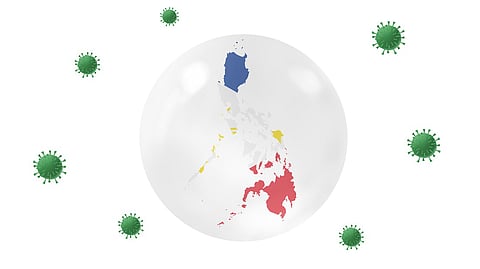WAAW 2025: Raising awareness on the Antimicrobial Resistance Surveillance Program in the Philippines
Antimicrobial resistance (AMR) is one of the most pressing public health challenges of our time, affecting millions globally. In the Philippines, where the nation is spread across many islands and healthcare access varies widely, AMR is not just a hospital concern; it impacts communities from major urban centres to the most isolated regions. Against this backdrop, the country’s AMR surveillance efforts are housed within the Department of Health – Research Institute of Tropical Medicine (RITM) at the Antimicrobial Resistance Surveillance Reference Laboratory (ARSRL). The laboratory implements the Antimicrobial Resistance Surveillance Program (ARSP), which serves as a key component of the national AMR response by tracking resistance patterns, raising awareness, guiding policy, and shaping practical interventions.
The latest Institute for Health Metrics and Evaluation data shows that in 2019, approximately 15,700 deaths in the Philippines were directly attributable to AMR, with an additional 56,700 associated deaths, illustrating AMR as a serious public health crisis. While these are the most recent published burden estimates, the COVID-19 pandemic posed challenges for continuing surveillance—highlighting the need for renewed investment and innovation in AMR monitoring. These realities reinforce the urgency behind the Philippines’ newly launched National Action Plan on AMR (2024-2028), which adopts a strong One Health strategy to mobilise coordinated action across human health, agriculture, and the environment.
At its core, the ARSP is more than just data collection. While the program primarily gathers phenotypic data from surveillance laboratories nationwide to create a snapshot of national resistance trends, it has now incorporated structured genomic surveillance efforts for a more in-depth analysis. This genomic component sheds light on the transmission of antimicrobial resistance genes (ARG), enabling a greater understanding of how AMR spreads. Beyond these laboratory reports, the ARSP acts as a bridge between scientific knowledge and public awareness, helping stakeholders understand how AMR spreads in real-world settings and how communities, clinicians, and policymakers can respond.
Awareness and education form a key focus area for the surveillance efforts, which must counter the significant challenge of antibiotic misuse in the Philippines, including self-medication and unregulated over-the-counter access. The program addresses this by ensuring healthcare providers receive updated resistance data to optimise prescribing and strengthen infection prevention control measures. Concurrently, public education initiatives promote responsible antibiotic use, hygiene, and vaccination, empowering communities to actively participate in slowing the spread of AMR.
However, implementing surveillance across an archipelago presents several challenges. Laboratories in resource-limited or remote settings may lack sophisticated diagnostic tools or consistent supply chains. Challenges persist among some laboratories regarding the isolation of samples and the submission of surveillance data. Yet the Philippines has demonstrated resilience and adaptability through the use of regional laboratory networks, capacity-building programs and digital reporting platforms ensuring data remains meaningful despite limitations.
Beyond clinical settings, the ARSRL’s work directly supports the Philippines’ broader One Health commitment, recognising that AMR is influenced not just by human medicine, but also by agriculture, veterinary practice, and environmental factors. To facilitate this multisectoral approach, the DOH RITM-ARSRL spearheads the Tricycle project, which unites the collective efforts of these different sectors against AMR. Surveillance insights encourage the agriculture sector to reduce unnecessary antibiotic use in livestock, guide environmental monitoring of wastewater and food systems, and promote intersectoral collaboration across all stakeholders. This cross-cutting approach is crucial in a country where agriculture and community-based livelihoods are deeply intertwined with daily life.
Despite the obstacles, the reference laboratory’s initiatives offer a hopeful narrative. It demonstrates that effective AMR surveillance and public awareness efforts are both possible and impactful, even in resource-constrained environments. By shifting AMR from a technical scientific issue to a visible public health priority, the program enables policymakers, healthcare workers, and communities to understand their roles in preventing resistance.
While surveillance data remains a critical backbone, the true value lies in transforming that data into actionable awareness, action, and sustained commitment. By highlighting AMR in various sectoral contexts, the program underscores that the fight against antimicrobial resistance is a collective journey—one requiring vigilance, education, and collaboration across sectors, communities, and future generations.
The Antimicrobial Resistance Surveillance Reference Laboratory (ARSRL) is an aerobic bacteriology lab and the coordinating center for the Department of Health (DOH) Antimicrobial Resistance Surveillance Program (ARSP), the Philippines established in 1988
Views expressed are the authors’ own and don’t necessarily reflect those of Down To Earth

